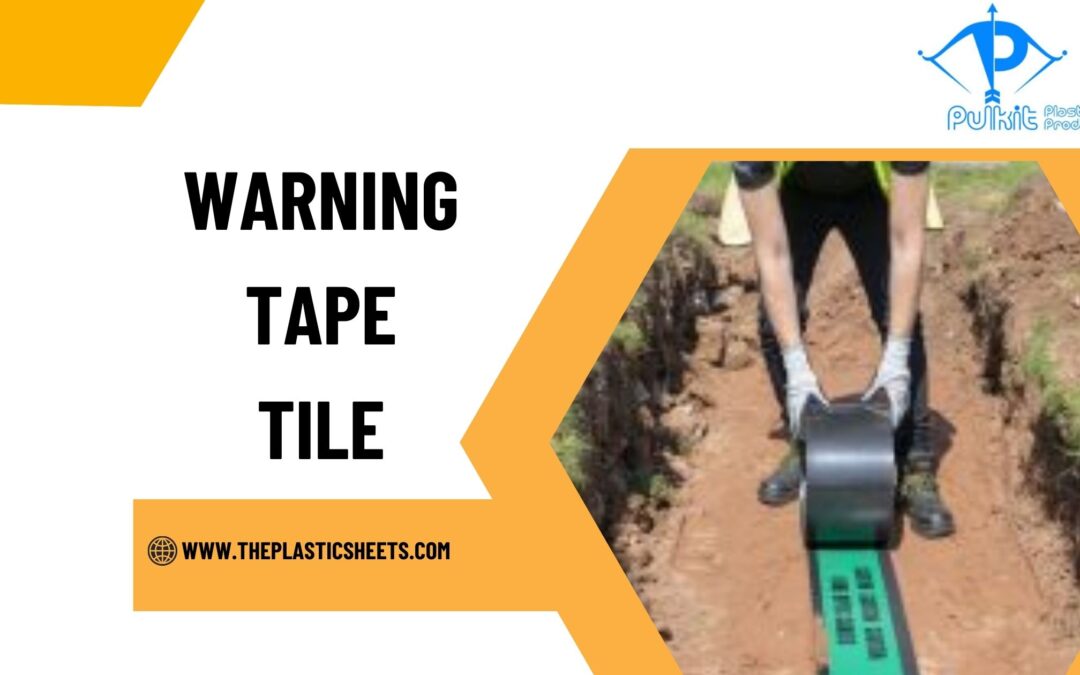Warning tapes are essential tools for ensuring safety in various environments, particularly in construction sites, industrial areas, and locations where underground utilities are present. Selecting the right warning tape can significantly enhance visibility and reduce the risk of accidents. This article delves into the types of warning tapes available, their applications, and specific considerations for ensuring maximum visibility and safety. It will also address common questions regarding warning tapes and related products like underground cable tiles and cable protection tiles.
Understanding Warning Tapes
Warning tapes, often referred to as hazard tapes or safety tapes, are brightly colored strips made from materials like polyethylene or vinyl. They are designed to alert individuals to potential hazards in their environment. The color and design of these tapes play a crucial role in their effectiveness.
Types of Warning Tapes
- Color-Coded Tapes:
- Red: Indicates danger or a stop condition, often used in areas where immediate action is required.
- Yellow: Warns of caution; commonly found in construction zones or around machinery.
- Green: Signifies safety or a safe condition.
- Blue: Used to indicate information; often seen in general safety messaging.
- Reflective Tapes: These tapes contain reflective materials that enhance visibility in low-light conditions, making them ideal for nighttime use or poorly lit areas.
- Custom Printed Tapes: Companies may opt for custom messages or logos on warning tapes to convey specific safety information relevant to their operations.
Applications of Warning Tapes
Warning tapes are versatile and can be used in various settings:
- Construction Sites: To delineate hazardous areas, protect workers from potential dangers, and mark off restricted zones.
- Utilities Management: In conjunction with products like Cable Protection Tiles, warning tapes help mark underground utilities to prevent accidental damage during excavation.
- Event Management: Used to guide attendees away from unsafe areas or direct foot traffic.
Choosing the Right Warning Tape
When selecting warning tape for maximum visibility and safety, consider the following factors:
1. Material Quality
The durability of the tape is crucial. High-quality polyethylene or vinyl tapes are resistant to weather elements, UV rays, and wear and tear. This ensures that the tape remains visible over time without fading.
2. Visibility
Opt for brightly colored tapes that contrast with their surroundings. The chosen color should align with industry standards for hazard identification. For example, yellow is widely recognized as a caution color.
3. Adhesive Strength
The adhesive used on the tape should be strong enough to withstand environmental conditions while being easy to apply and remove when necessary. A good adhesive ensures that the tape stays in place until it is intentionally removed.
4. Size and Width
The width of the tape can affect its visibility. Wider tapes are generally more noticeable from a distance. Consider the environment where the tape will be used; larger areas may benefit from wider tapes for better visibility.
5. Reflective Properties
For areas with low light or nighttime work, consider reflective warning tapes that enhance visibility by reflecting light from vehicles or flashlights.
Related Products: Underground Cable Tiles and Cable Protection Tiles
In conjunction with warning tapes, products like Underground Cable Tiles and cable protection tiles play a vital role in ensuring safety around buried utilities:
- Underground Cable Tiles: These tiles are installed above underground cables to provide a visible marker indicating the presence of buried utilities. They often come with printed warnings to alert excavation crews.
- Cable Protection Tiles: Made from durable materials like high-impact polyethylene, these tiles protect cables from damage due to machinery or excavation activities. They can be customized with printed warnings, enhancing their visibility on site.
Advantages of Using Warning Tape with Cable Protection Products
- Enhanced Safety: By using warning tape alongside cable protection tiles, you create a comprehensive safety system that alerts workers to potential hazards.
- Cost-Effective Solution: Investing in quality warning tape can prevent costly accidents related to damaged underground utilities.
- Easy Installation: Both warning tape and cable protection products are designed for straightforward installation, making it easier for teams to set up safety measures quickly.
Conclusion
Choosing the right warning tape is crucial for maximizing visibility and ensuring safety in various environments, especially where underground utilities are involved. By considering factors such as material quality, visibility, adhesive strength, size, and reflective properties, you can select an effective solution tailored to your specific needs. When combined with products like underground cable tiles and cable protection tiles from reputable suppliers such as Pulkit Plastic Products, you create a robust safety framework that minimizes risks associated with excavation and construction activities. Investing in proper signage not only protects workers but also safeguards valuable infrastructure from damage.
Frequently Asked Questions (FAQ)
What types of materials are used for warning tapes?
Warning tapes are typically made from polyethylene or vinyl due to their durability and weather resistance.
How do I choose the right color for warning tape?
Select colors based on industry standards; red indicates danger, yellow signifies caution, green represents safety, and blue provides informational warnings.
Can I customize my warning tape?
Yes, many suppliers offer custom printing options for messages or logos on warning tape to meet specific safety needs.
What are underground cable tiles?
Underground cable tiles are markers placed above buried utilities to indicate their presence, helping prevent accidental damage during excavation activities.
How do cable protection tiles enhance safety?
Cable protection tiles shield underground cables from physical damage caused by machinery or excavation tools while providing visible warnings through printed messages.
